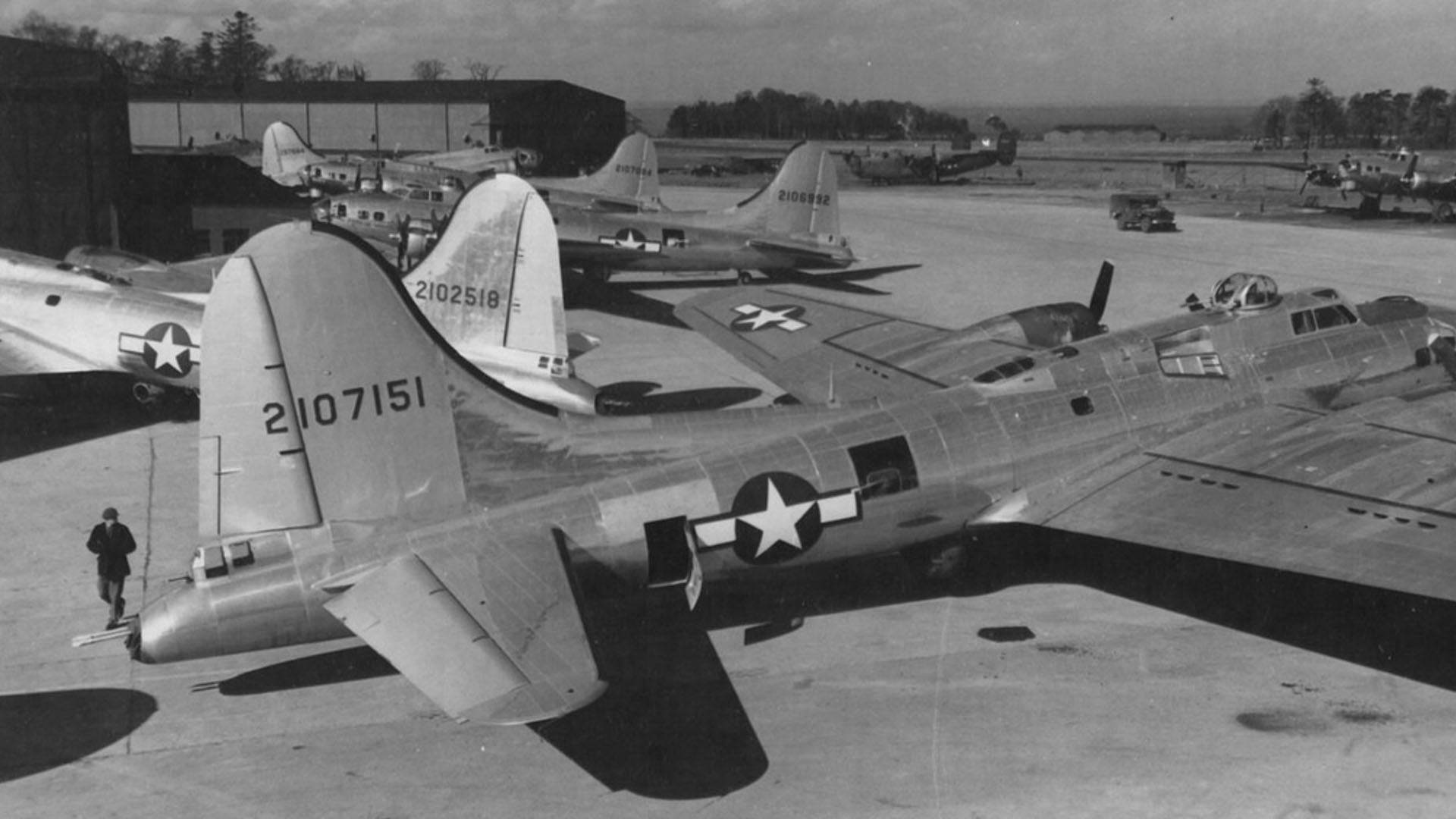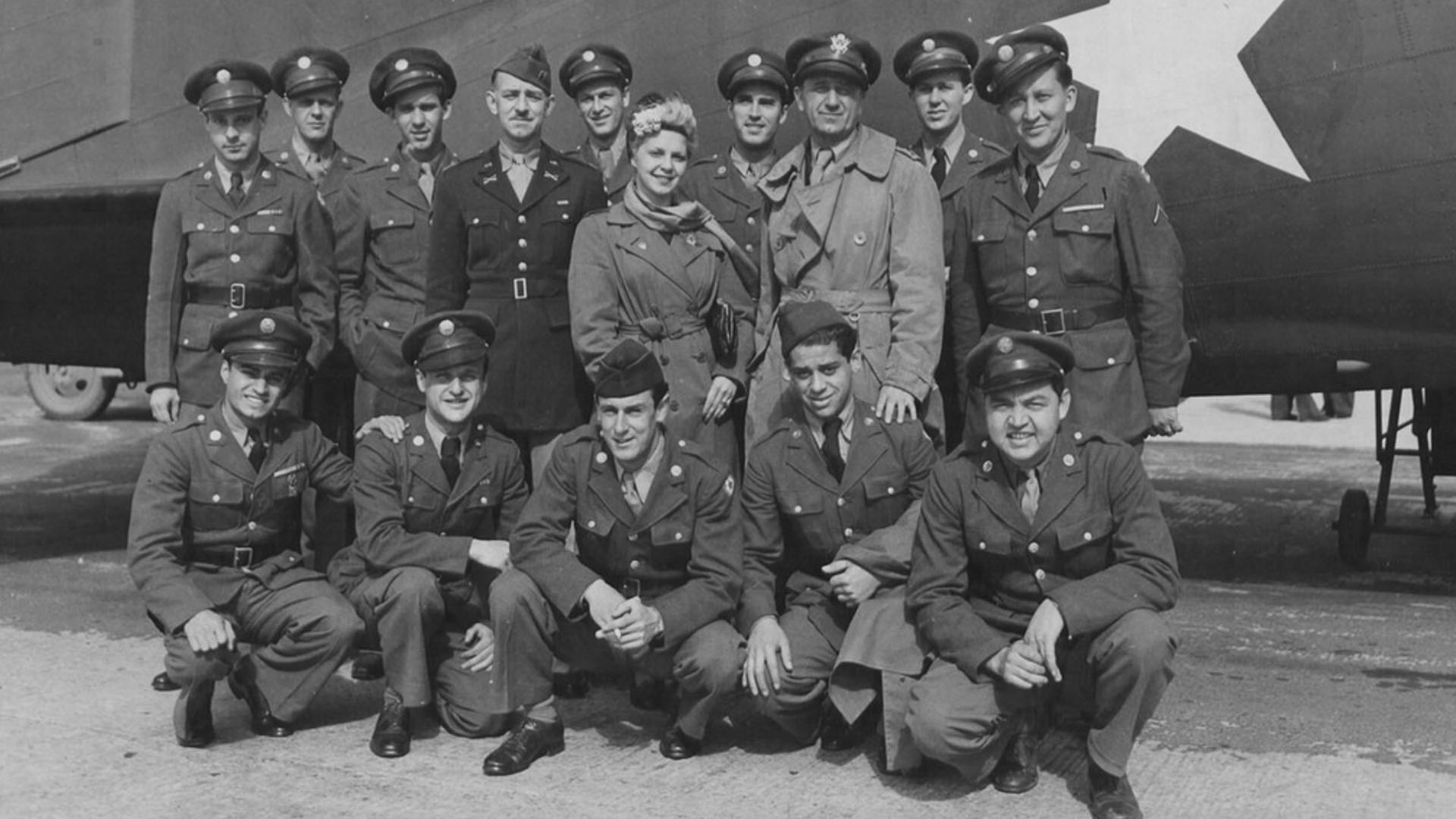Langford Lodge was once a stately home on the Co. Antrim shoreline of Lough Neagh. During the Second World War, the United States Army Air Force requisitioned the site as a base.
Throughout its history, Langford Lodge Airfield was also known as R.A.F. Langford Lodge or No. 20 Satellite Landing Ground. Situated 23 kilometres from Belfast, the Satellite Landing Ground to R.A.F. Aldergrove was used by No. 23 Maintenance Unit. In December 1941, despite being unfinished, the airfield passed to the United States Army Air Force.
Construction began in February 1942. Hundreds of skilled technicians arrived from the United States of America to ports at Belfast and Larne. On their arrival at Langford Lodge, they found an incomplete airbase. Their first job was to dig ditches, build huts, and lay concrete to bring the base up to standard. Then, the real work could begin.
Plans had emerged to create a civilian-operated base at Langford Lodge before the United States entered the war. Langford Lodge Air Depot would become one of four base air depots in the UK. Designated Base Air Depot No 3, AAF Station 597. It opened on 15th August 1942 under the Lockheed Overseas Corporation.
Base Air Depot No. 3, United States Army Air Force Station 597 at Langford Lodge was one of four base air depots in the United Kingdom. At these bases, the U.S.A.A.F. carried out assembly, modifications, repairs, and overhauls. There, the 8th Air Force processed thousands of British and American planes on their way to war. The base played a vital role in the U.S. Army Air Force’s war in Europe. At the time, it was their second-largest depot outside of the United States.
In May 1944, 6,673 people worked on the Langford Lodge base.
- 3,227 United States Army Air Force personnel.
- 1,906 Lockheed local civilian employees.
- 1,540 Lockheed American contracted employees.
That month, the United States Army Air Force cancelled the contract with Lockheed and U.S.A.A.F. personnel took over the base. A small amount of Lockheed employees remained on-site, now employed as U.S. civil servants. The designation of the base changed to a Storage and Experimental Station attached to the Base Air Depot Area. 328th Service Squadron, 343rd Service Squadron, and 5th Aerodrome Squadron undertook the former Lockheed duties.
U.S.A.A.F. at Langford Lodge
The summer of 1944 saw an influx of planes placed in storage. Most were war-weary designated A-20s, B-17s, and B-24s of the United States 8th and 9th Army Air Forces. Service Squadrons either refurbished the planes or used them to salvage parts. Transport of more refurbished planes required 311th Ferrying Squadron and 312th Ferrying Squadron move to Langford Lodge from R.A.F. Maghaberry.
By July 1945, the American military personnel at Langford Lodge had achieved their objectives. The United States Army Air Force left the base with the Service Squadrons moving on to Base Air Depot 1 at Burtonwood, Cheshire. The handover to the Royal Air Force took place in August 1945.
Other units at Langford Lodge during the Second World War included:
- No. 22 Veterinary Section.
- No. 897 Military Police Company.
- No. 1145 Military Police Company.
- No. 401 Signal Company.
- No. 402 Station Gas Defence Detachment.
Around the Base
The completed airfield comprised two runways. The longest ran north-south at a distance of over 1 mile long. A smaller secondary runway ran east-west. In the centre of the complex stood the old manor house. The home of the Packenhams received modernisation in preparation for accommodating high-ranking officers.
Close to the manor house, stood the H-shaped hospital and dental unit built in July 1942. It boasted some of the most advanced technology in the European Theatre of Operations. Staffed by American civilian doctors, nurses, and technicians, it operated 24 hours a day.
Eleven large hangars formed a technical area around the runways. One hangar, known as the “Superhangar” consisted of two T2 hangars joined together. It stood next to the flight test strip. Lockheed Overseas Company also built their own large hangar. It saw use for propeller refurbishment, sand-blasting and x-raying. In the middle of this technical area stood Gartree Church. The control tower was noted as the first in the United Kingdom to use angled windows to reduce reflections.
Next to the technical area was a vehicle maintenance area consisting of Robin hangars. Butler buildings housed storage warehouses, laundries, and storage units for machinery. Scattered around the base were occasional Nissen huts and Quonset huts for use by civilian personnel.
The United States Army Air Force divided accommodation and recreation between six sites. Sites 1, 2 and 6 were on the airfield. Site 3 was across a small road opposite site 4. Site 4 was at the Gortnagallon marshalling yard on the old Great Northern Railways line. This section of the line was purpose-built for the air base. Site 5 lay to the east of site 4. All consisted of prefabricated, linoleum-floored, steam-heated SECO huts for accommodation. Residential blocks also contained toilet blocks and washing facilities. Nearby, stood decontamination blocks, and air raid shelters. Site 6 was the United States Army Headquarters building, the telephone exchange, and the air base theatre.
The on-site cinema and theatre was a grand source of entertainment. The Lockheed Overseas Corporation spent a lot on the entertainment of their employees. Langford Lodge had its own jazz band known as ‘The Jive Bombers’. They accompanied some of the famous musicians who visited the base as well as playing shows in Belfast and appearing on BBC Radio broadcasts.
Between 1942 and 1945, many of the biggest celebrities of the day visited Langford Lodge. On 13th August 1944, Glenn Miller performed to a large crowd. Other famous faces included Bob Hope, Al Jolson, Francis Langford, Carol Landis, and boxer Joe Louis. The base also had ice-cream making facilities, its own radio show named the ‘Nit Wit Network’, and a newspaper called ‘The Daily Magnet’.
Langford Lodge also boasted fine sports facilities including a bowling alley, rifle range, and tennis courts. There were also pitches for the Americans to play basketball and baseball. There were several baseball teams on the base who played against other teams of U.S. servicemen in Northern Ireland.
Back Row: Private Walter Nutter (Lake Placid, NY), Private Russell Padrich (Lomberville, NJ), Private Eddie Cas (Lorraine, OH), Captain DR Kenzie (Middleboro, MA), Special Services Officer Private Tom John (Milwaukee, WI), Miss Yvette (Birmingham, AL), Staff Sergeant Hal Craig (Vermont, MA), Captain Bernard Szold (Holywood, CA), Private BJ Weldon (McAlester, OK), Private First Class William Bartos (Brooklyn, NY). Front Row: Private Peter Cichetti (Tuxedo, NY), Private Stefan Cryak (Chicago, IL), Private First Class Allen Tonken (Somerville, NJ), Private Carmen Montone (Auburn, NY), Private EC Norman (Los Angeles, CA).
Langford Lodge Today
Langford Lodge was one of the targets listed in Operation Green, a second wave attack to follow Operation Sea Lion, the Nazi invasion of Britain. German paratroopers were to take the airfields of Langford Lodge, Aldergrove, and Nutts Corner. A further airfield at Long Kesh would be destroyed.
The main aerodrome at Langford Lodge remains visible today with maintained runways. The Martin-Baker Company owns part of the site but most of the airfield belongs to the R.L.C. Engineering Group. In recent times, the Ulster Aviation Society housed their collection on the site. This has since moved to the old R.A.F. Long Kesh site. Langford Model Aviation Club and Langford Model Heli Club operate from the former USAAF base.
Many of the Second World War era buildings faced the wrecking ball in 1981. Murals of pinup girls from the U.S.A.A.F’s time on the site disappeared in the debris. Only photos now remain. There is no access permitted to some of the remaining old buildings including the theatre where Glenn Miller played twice in August 1944.




